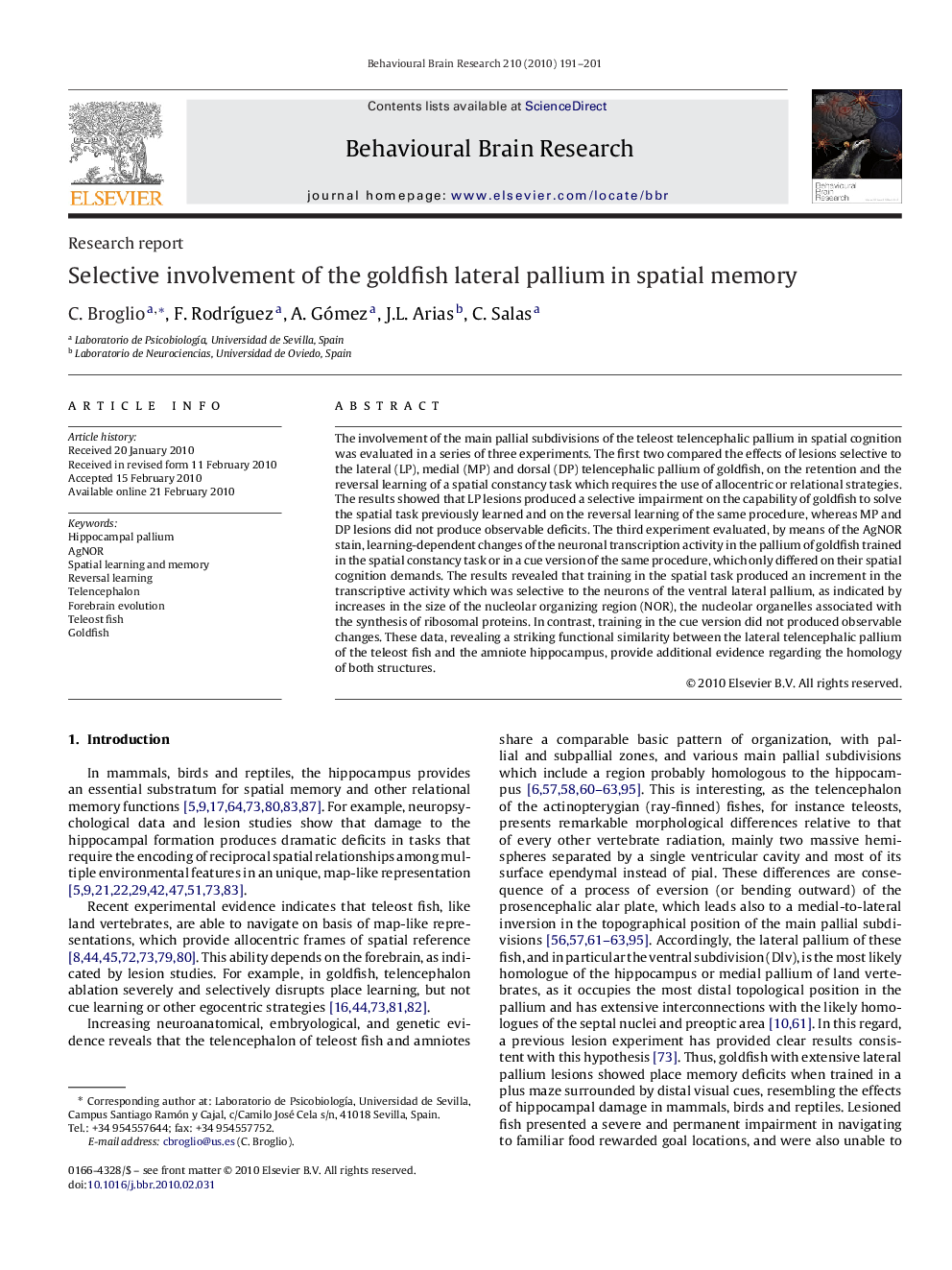| Article ID | Journal | Published Year | Pages | File Type |
|---|---|---|---|---|
| 4313900 | Behavioural Brain Research | 2010 | 11 Pages |
The involvement of the main pallial subdivisions of the teleost telencephalic pallium in spatial cognition was evaluated in a series of three experiments. The first two compared the effects of lesions selective to the lateral (LP), medial (MP) and dorsal (DP) telencephalic pallium of goldfish, on the retention and the reversal learning of a spatial constancy task which requires the use of allocentric or relational strategies. The results showed that LP lesions produced a selective impairment on the capability of goldfish to solve the spatial task previously learned and on the reversal learning of the same procedure, whereas MP and DP lesions did not produce observable deficits. The third experiment evaluated, by means of the AgNOR stain, learning-dependent changes of the neuronal transcription activity in the pallium of goldfish trained in the spatial constancy task or in a cue version of the same procedure, which only differed on their spatial cognition demands. The results revealed that training in the spatial task produced an increment in the transcriptive activity which was selective to the neurons of the ventral lateral pallium, as indicated by increases in the size of the nucleolar organizing region (NOR), the nucleolar organelles associated with the synthesis of ribosomal proteins. In contrast, training in the cue version did not produced observable changes. These data, revealing a striking functional similarity between the lateral telencephalic pallium of the teleost fish and the amniote hippocampus, provide additional evidence regarding the homology of both structures.
